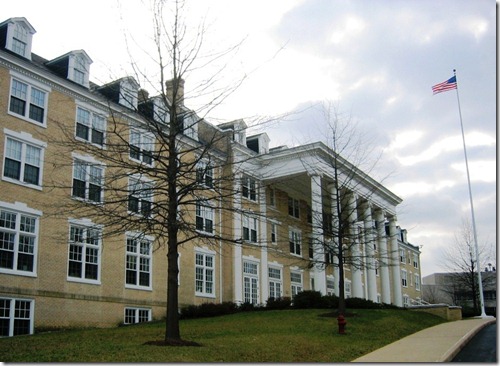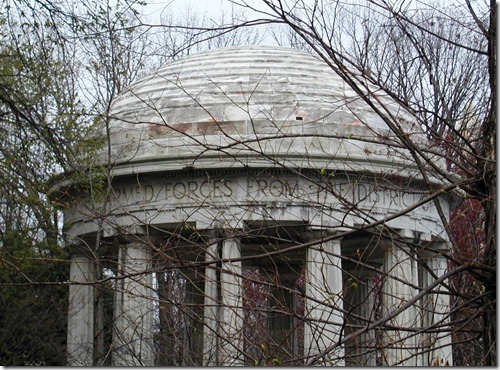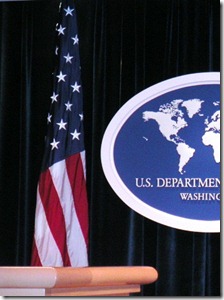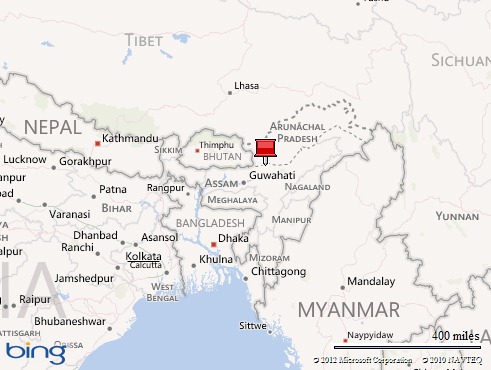Bihu, Assamese New Year
Guest Post by Pranjal Borthakur
Bihu is a set of three cultural festivals celebrated in the Indian Province of Assam and other regions of the Indian subcontinent. The most popular, Rongali Bihu, celebrates the onset of the Assamese New Year in mid-April (around April 15). The second, Kongali Bihu, occurs in mid-October, while the third, Bhogai Bihu, happens at the end of the harvest season in January. Rongali Bihu commemorates the first day of the Hindu solar calendar and the beginning of the agricultural season when farmers cultivating their fields feel a sense of joy and optimism. The ancient festival lasts seven days and is known for its feasts, lively performances, and merriment. The celebration generally transcends castes and religion and has evolved into a more secular festival that promotes humanity, peace, and fraternity between the classes and faiths.
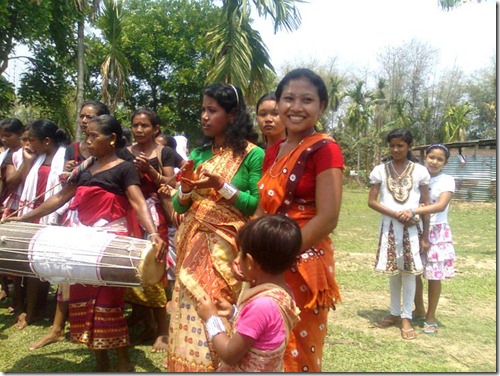
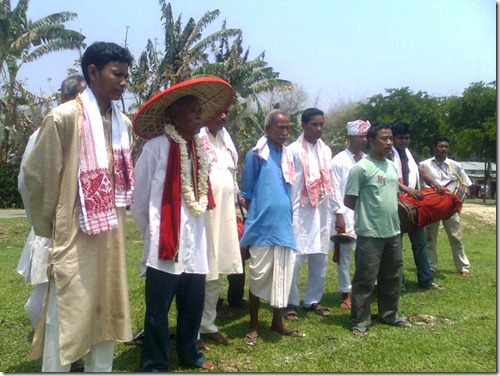
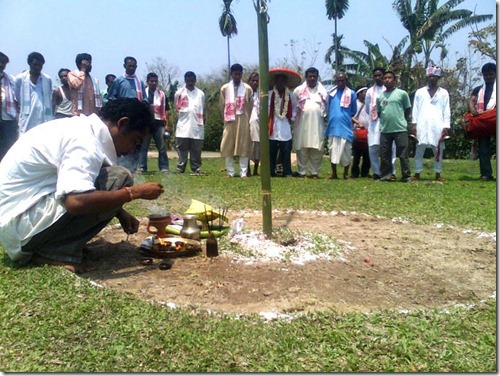
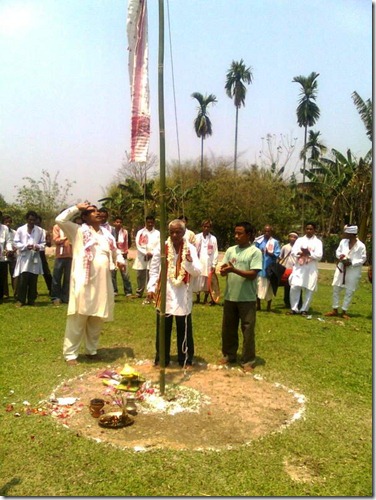
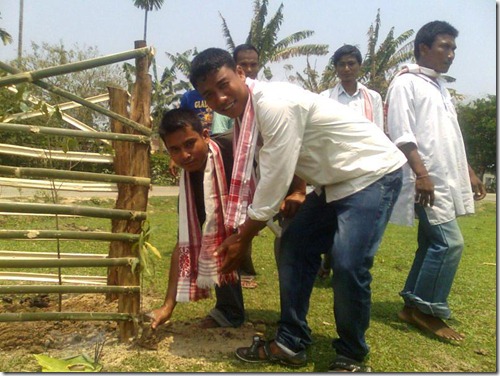
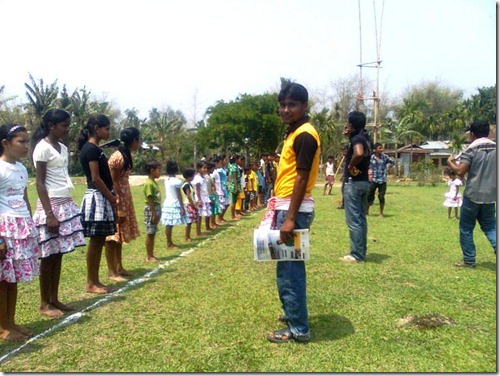
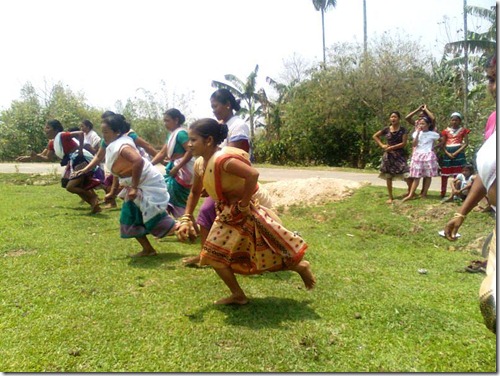
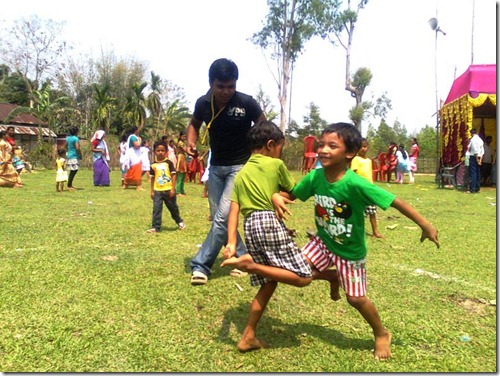
The festival begins on the last day of the previous year — usually April 14. On the first day, called Goru (Cow) Bihu, cows are washed and smeared with paste, struck with sprigs of herbs, untethered, and allowed to roam free for the day.
On New Year Day, Manuh (Human) Bihu, celebrants clean up, put on new clothing, and ring in the New Year with vigor. Elders are shown respect, receive bihuwan (gamosa cloth), a hachoti (kerchief), and are asked for blessings. The red-and-white gamosa hand woven on a loom by mothers and daughters (see below) is especially revered as a mark of respect for the Assamese and a prized gift. Husori (carol) singing begins, and people visit family and friends.
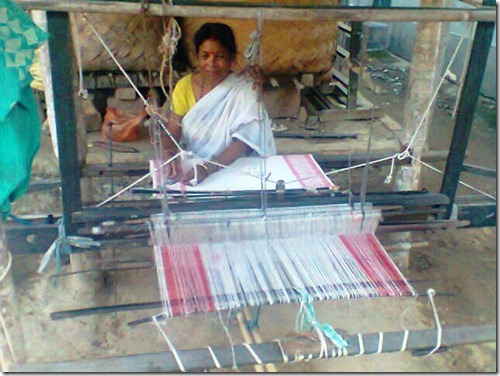
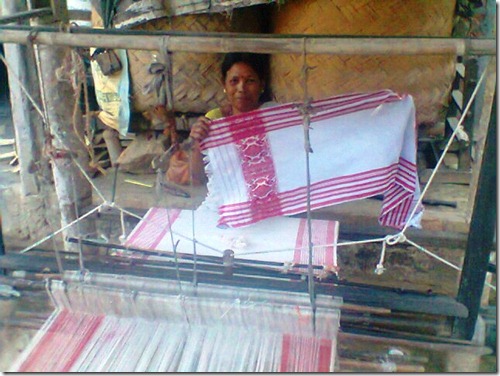
The third day, Gosai (Gods) Bihu, is dedicated to the worship of the gods, with requests for blessings in the New Year, and cleaning house. The remaining days, Hat Bihu, Senehi Bihu, Maiki Bihu, and Sera Bihu, each represent a special significance in the New Year.
Pitha, traditional cakes made from rice flour and fillings such as coconut, and larus or jolpan snacks help make the season more festive.
Music plays a central role in Bihu. Folk songs associated with the Rongali Bihu are called Bihu Geets (Bihu songs). Husori (huchari) are traditional carols that celebrate Bihu. Huchari comes from the Dimasa Kachari words for “land” (ha) and “move over” (char). Rongali Bihu is also a fertility festival, where Bihu dancing celebrate young women’s fertility with its sensuous movements. It is a time for young men and women to seek partners and mates.
Bihu Performances
Singing, dancing, and performing is a very important part of the celebration. Dancers dance on an elevated stage in an open area known as a Bihutoli popular throughout Assam. Performances may include Bihu dances, theatrical performances, concerts by solo singers, and standup comedy that entertain audiences late into the night. They keep the audience enthralled well into the early hours of the morning. In the photos below, village children in small groups sing husori and dance in traditional Bihu style.
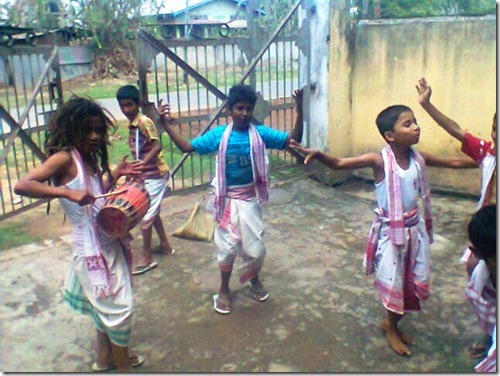
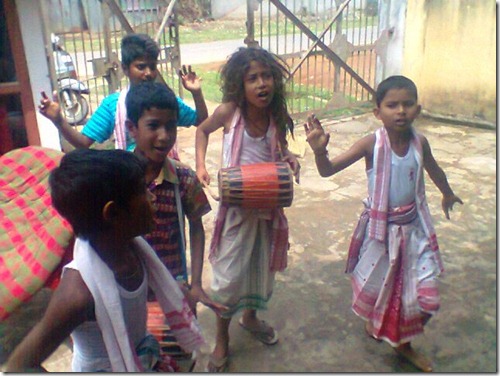
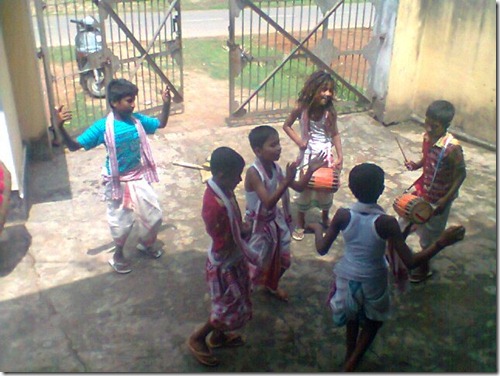
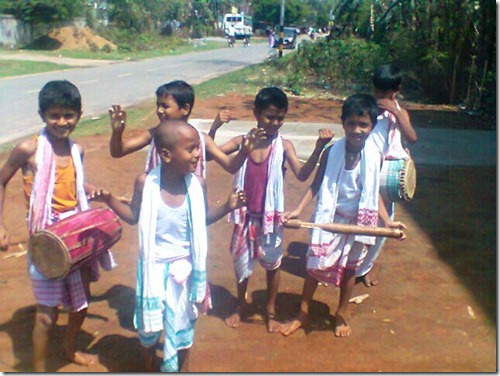
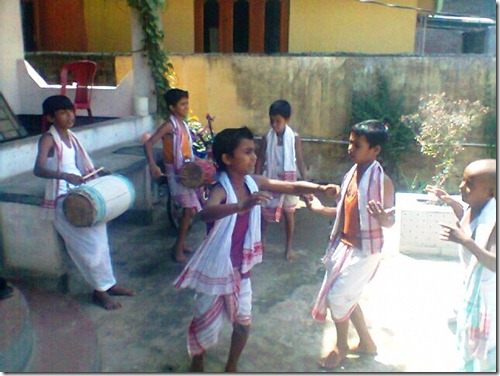
My niece Mamu posed with the village kids after their Bihu dance. She enjoyed it so much that she begged to take photos with them in Assamese, “Munu mur photo tana.”
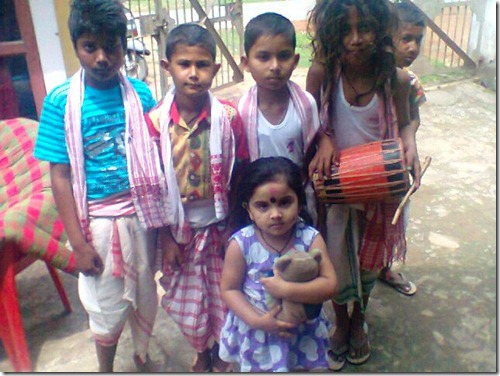
Children, adolescents, and teens perform suori or dhodhi monthon, a reenactment of the god Krishna’s childhood.
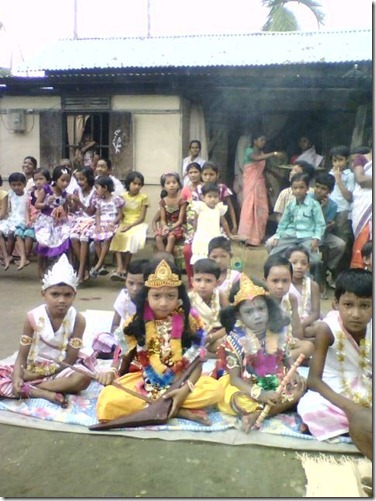
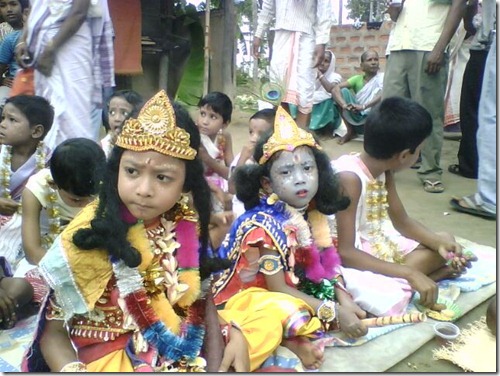
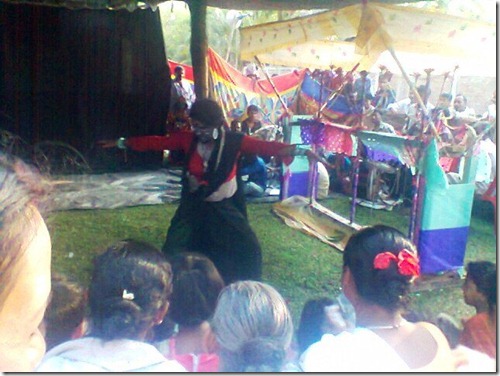
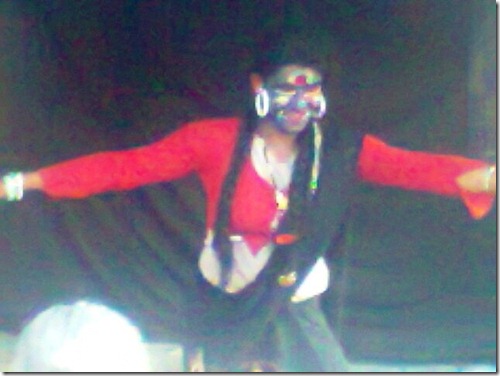
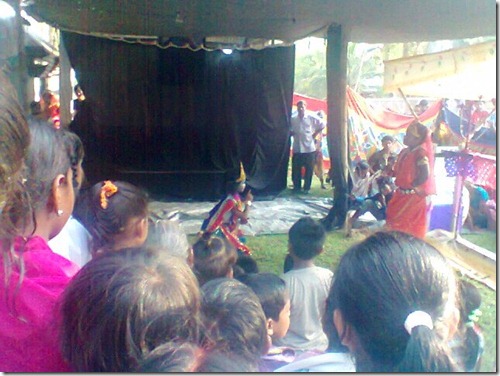
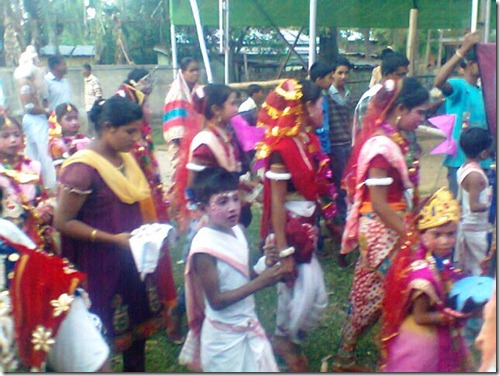
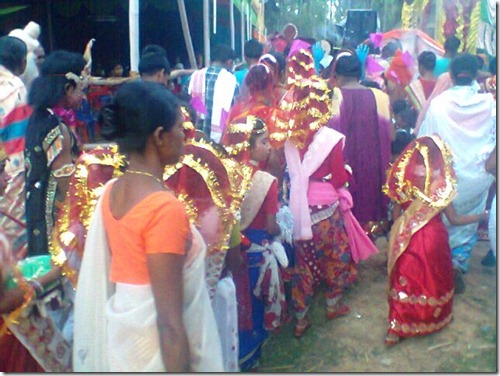
Various tribal groups take the stage to compete with one another singing husori. The singers announce their arrival with drum beats and come on stage, where they sing songs and perform a ring dance. At the end of the performance, they are thanked with an offering. In one dance, young men engaged in a mock war with one another on stage. It was quite unnerving!
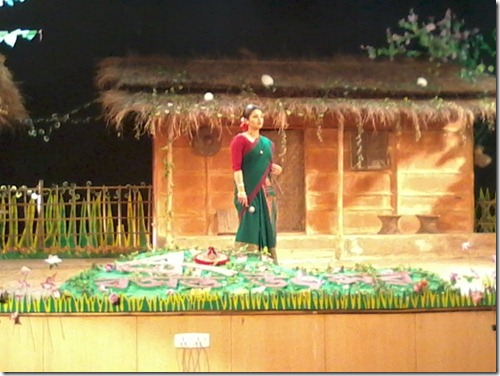
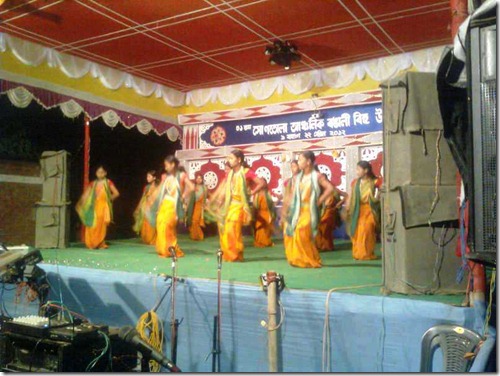
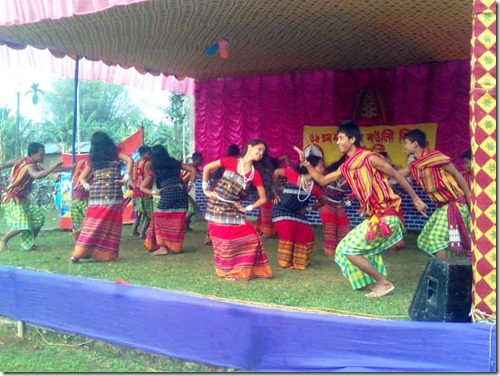
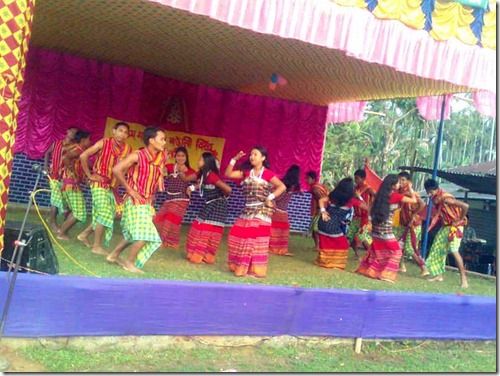
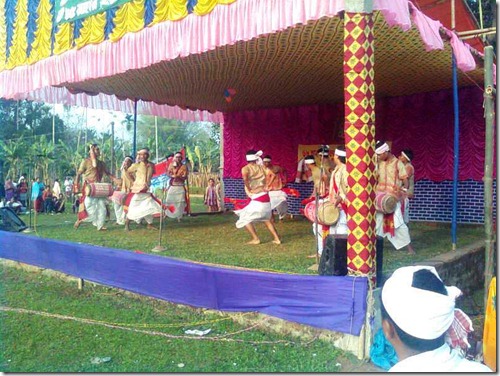
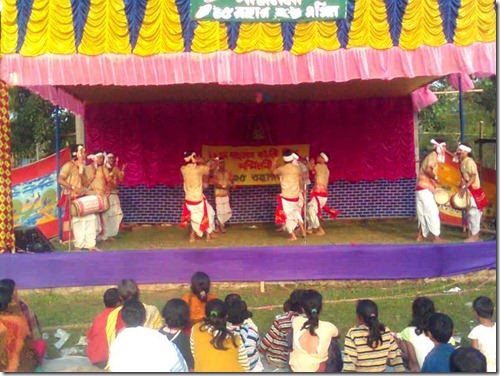
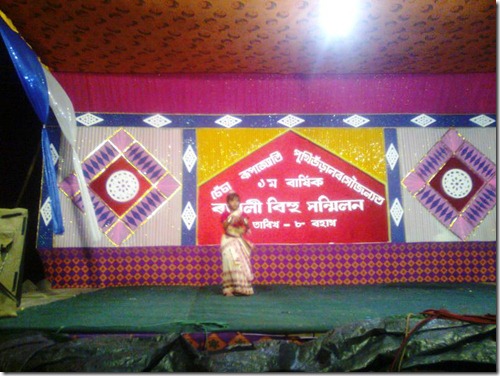
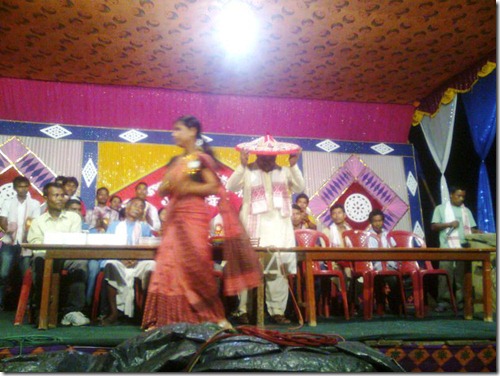
In some parts of Assam, Kali Puja is also performed as a prayer to the goddess Kali. It typically involves the sacrifice of goats and other animals.
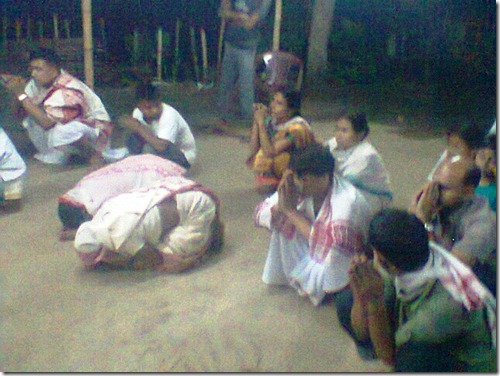
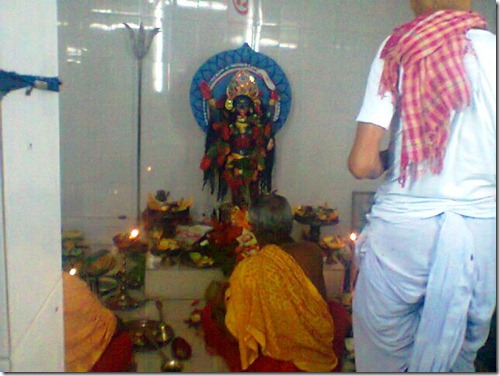
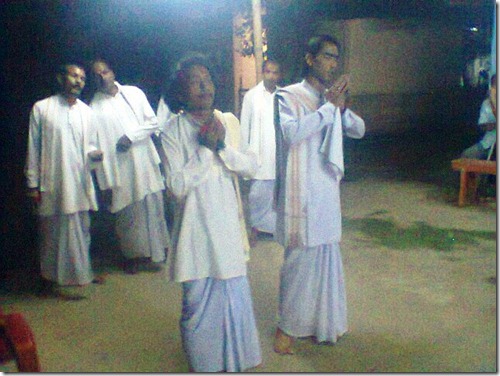
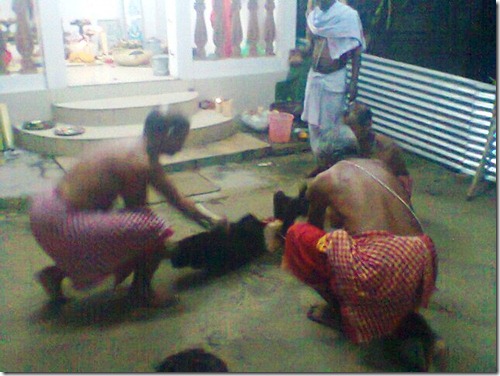
Young unmarried men and women wearing traditional golden silk muga dance the Mukoli Bihu and sing Bihu songs to celebrate female sexuality. The songs have themes of requited or unrequited romance and love. Although the songs describe tragic events, they are treated lightly by the audience. Bihu dance groups from different villages compete with one another for the privilege of joining the Village Bihu Group.
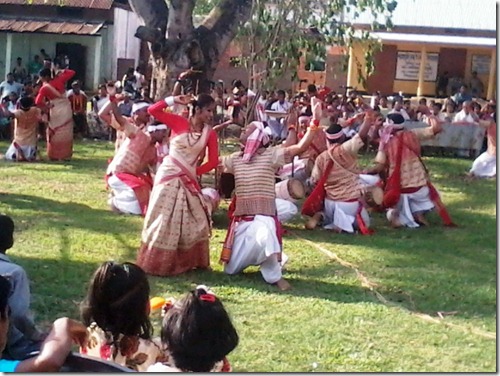
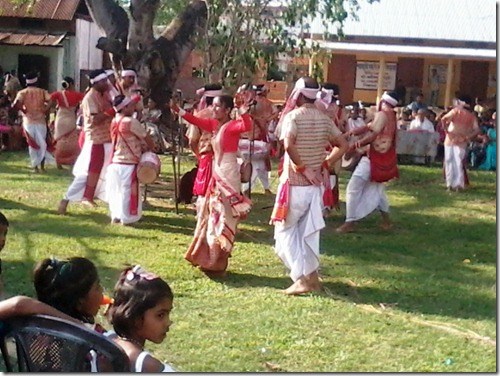
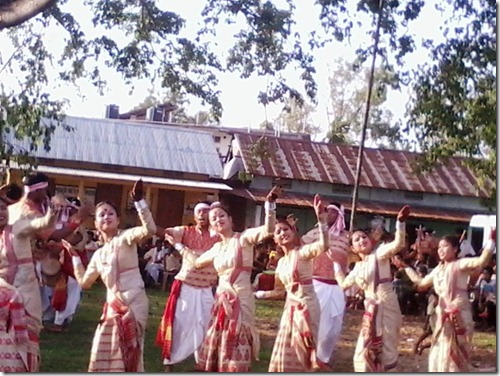
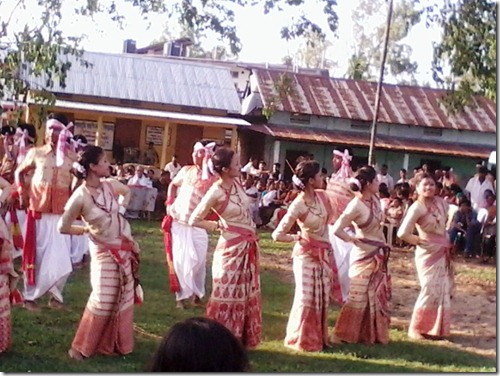
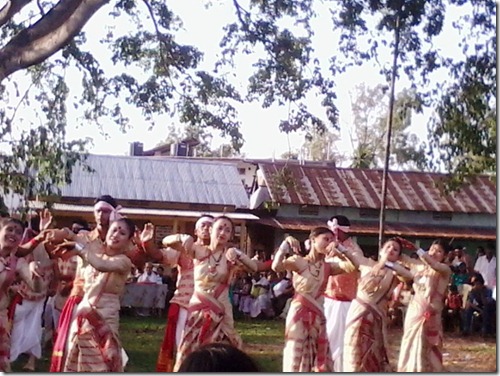
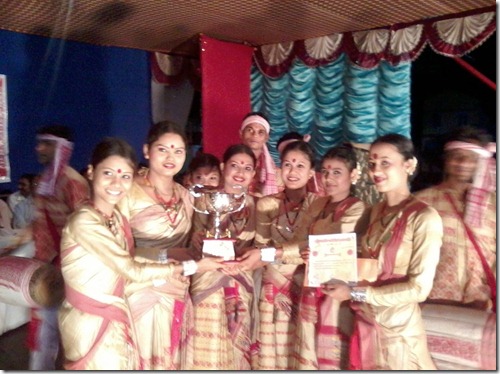
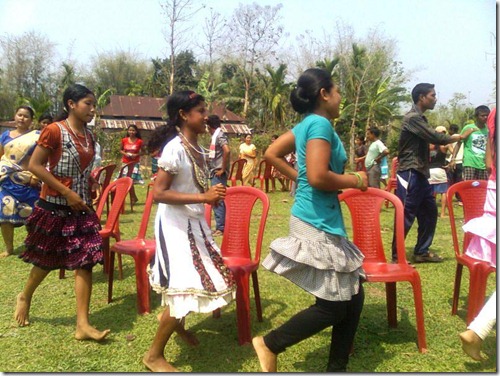
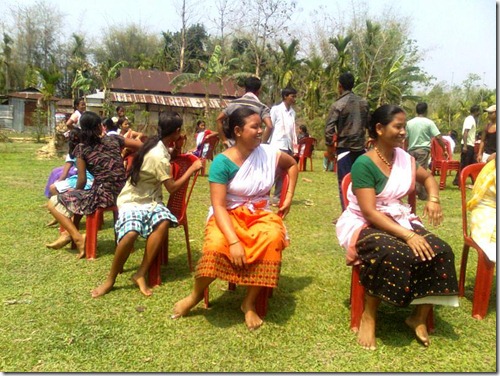
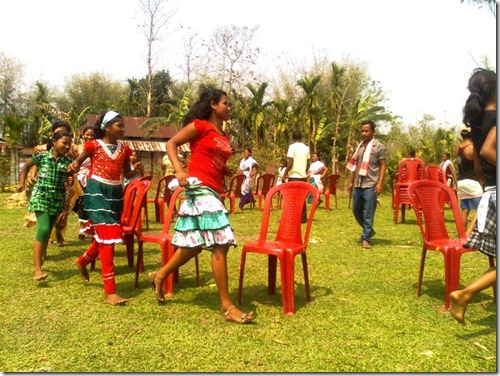
Other forms of Bihu that are celebrated in Assam include Fat Bihu, an old form characterized by spontaneity that is popular in Lakhimpur, Assam; the Jeng Bihu performed and watched exclusively by women; Beshma, and Baisago.
About Shree Sai Siksha Niketan School
The Shree Sai Siksha Niketan School is located in Guwahati, the capital of Assam Province in India. The school for boys and girls has 51 students in grades 1 through 12. Although the school is financed by private sources and resources are limited, Mr. Borthakur and his dedicated staff and teachers work hard to provide a quality education to these promising students. Since its founding, the school has grown from 12 students and continues to grow. Below are photos of the school’s students performing at the First Annual Day Celebration held in early 2012.
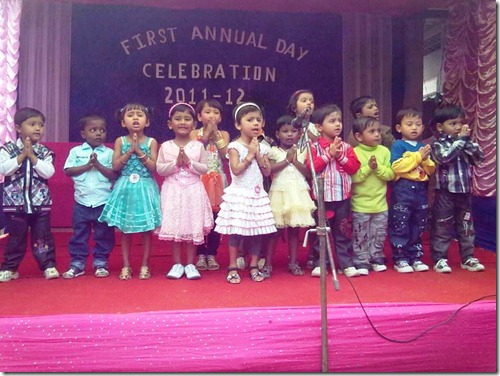
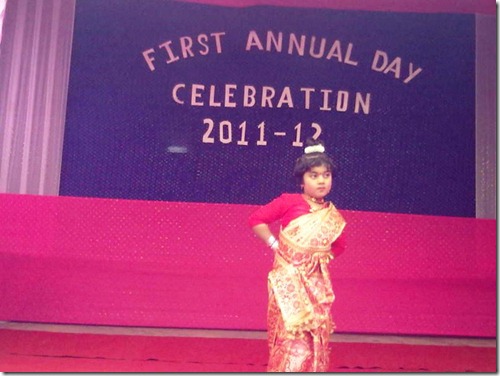
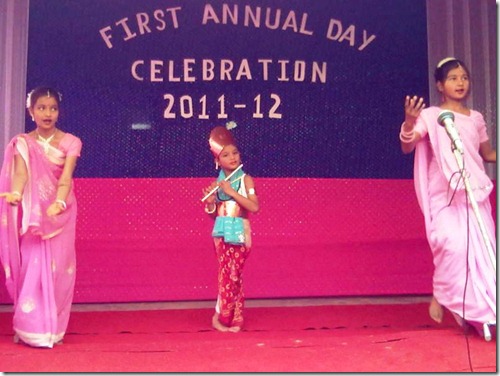
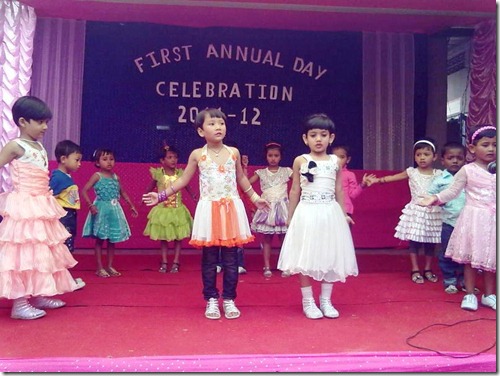
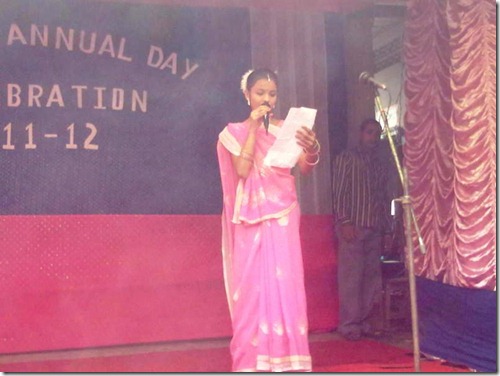
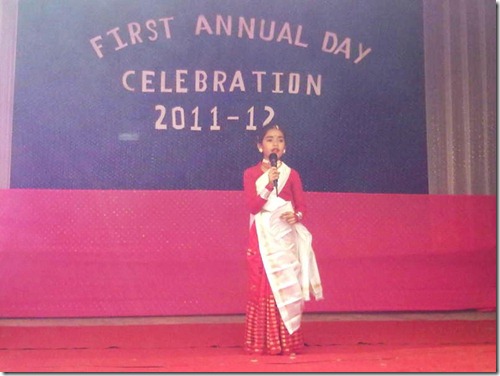 Below are photos of the school principal and the staff. They are a dedicated group of individuals.
Below are photos of the school principal and the staff. They are a dedicated group of individuals.
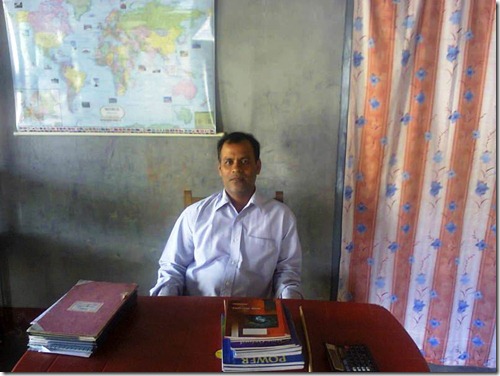
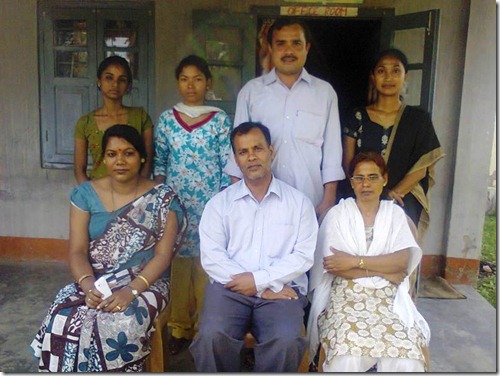
Students and staff participate in a class activity at the school.
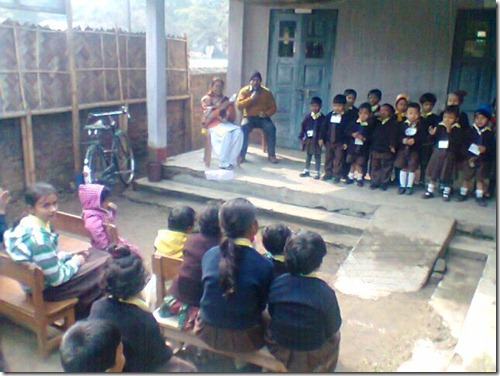
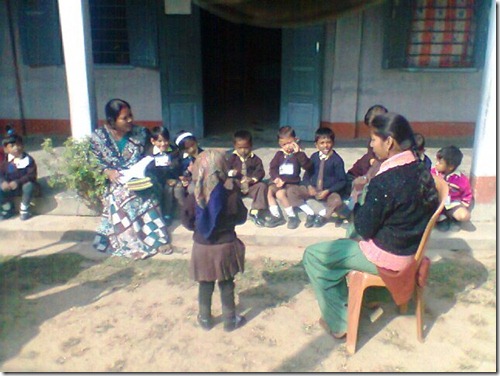
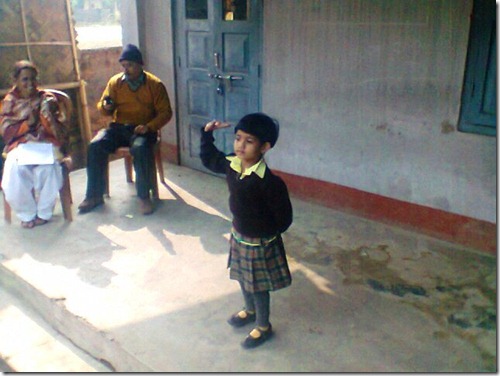
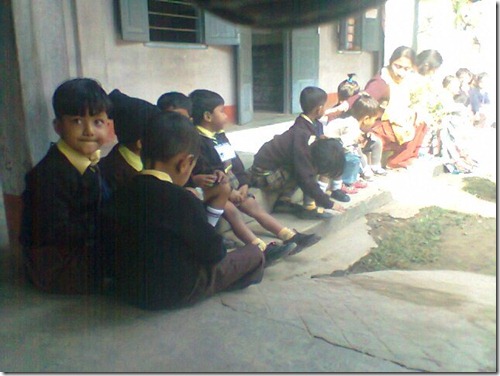
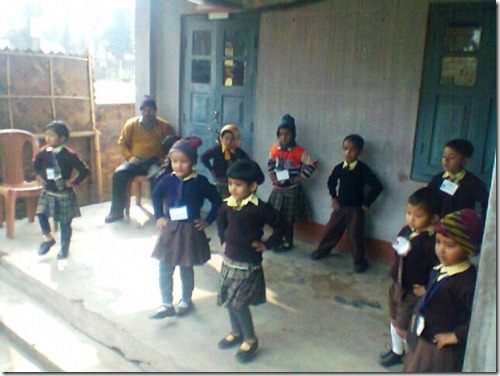
About Pranjal Borthakur
Pranjal Borthakur is head of the Shree Sai Siksha Niketan School. Married and a father of two, he has dedicated his life to running Shree Sai Siksha Niketan School and offering an affordable education to children in Guwahati. Below are photos of Mr. Borthakur and his family in Guwahati.
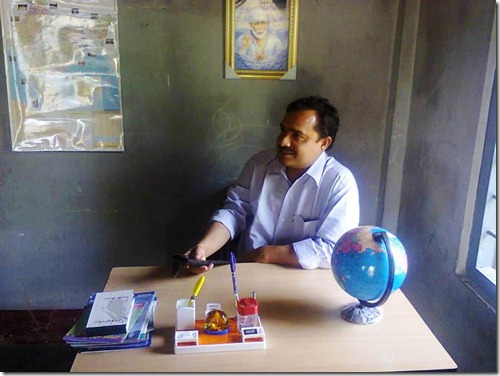
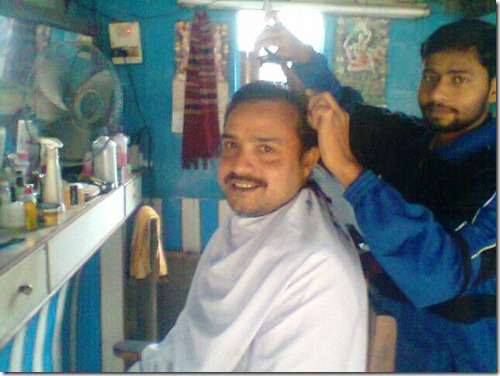
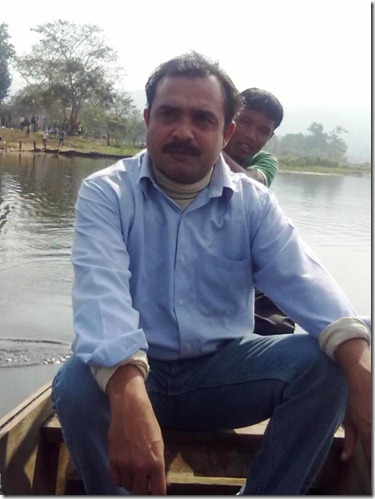
Pranjal’s daughter Asmita (center), son Manas (left), and niece Mamu.
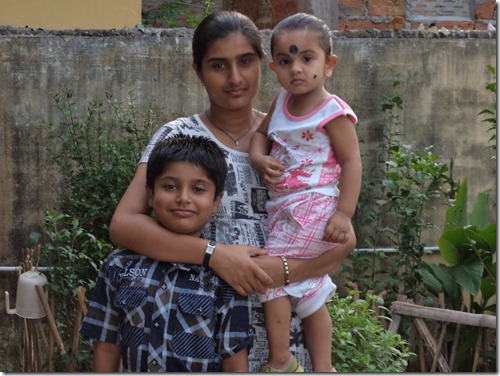
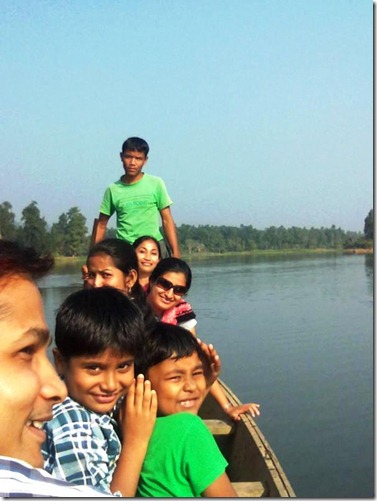
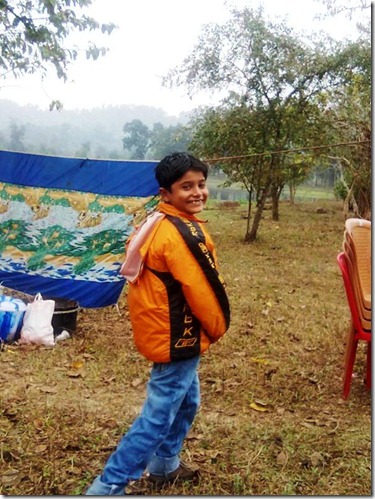
Pranjal’s wife with a group during a school outing.
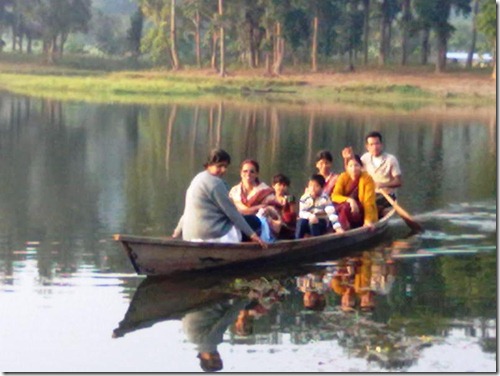
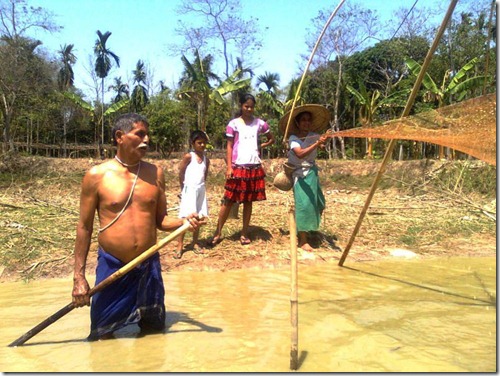
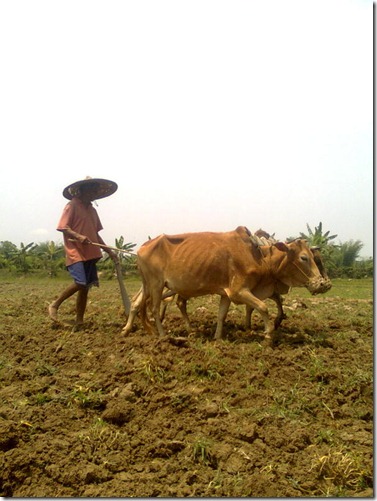
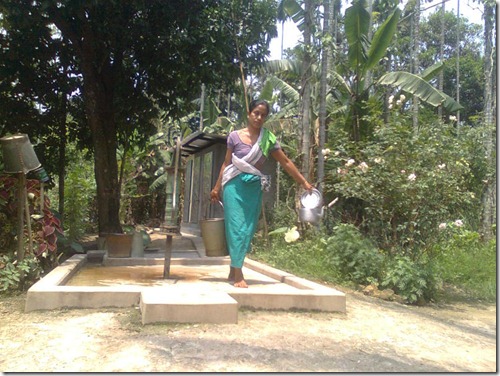
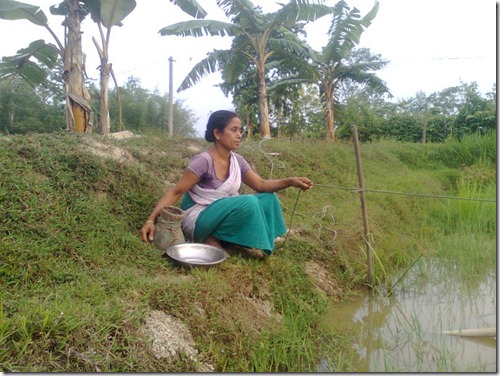
Photos from Pranjal’s childhood. Riding horses with his brother Pranab and with his father, Dr. Borthakur, and brother.
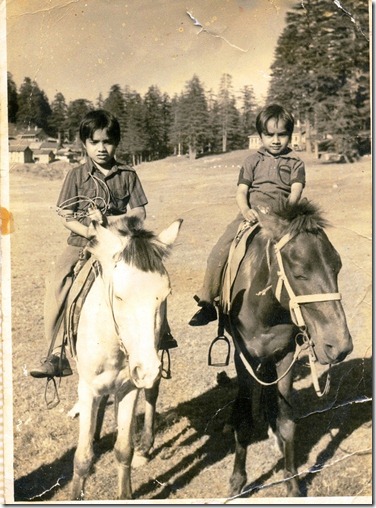
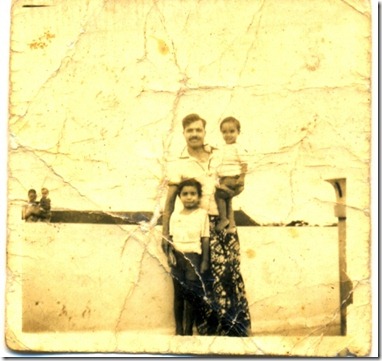
For more information about Assamese culture, the Shree Sai Siksha Niketan School, or to inquire how you can support the school, contact Mr. Borthakur at:
E-mail: pranjalbarthakur@gmail.com
Twitter: http://www.twitter.com/@pranjalbor
Web page: http://sssniketan.blogspot.com/
Blog: http://pranjalborthakur.wordpress.com/
Phone: +917399555359
Address: Pranjal Borthakur, Airforce Gate, Village Raibori, Police Station Palasbari, Post Office Bongora , Guwahati-781015
More About India
Click on the icons below for more articles about India
[table]
 ,
, ,
,
[/table]

